Related Research Articles

The Canadian Army is the command responsible for the operational readiness of the conventional ground forces of the Canadian Armed Forces. It maintains regular forces units at bases across Canada, and is also responsible for the Army Reserve, the largest component of the Primary Reserve. The Army is headed by the concurrently held Commander of the Canadian Army and Chief of the Army Staff, who is subordinate to the Chief of the Defence Staff. The Army is also supported by 3,000 civilian employees from the civil service.
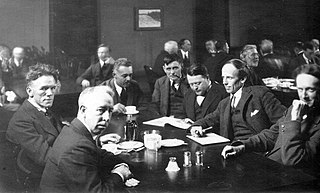
The Group of Seven, once known as the Algonquin School, was a group of Canadian landscape painters from 1920 to 1933, originally consisting of Franklin Carmichael (1890–1945), Lawren Harris (1885–1970), A. Y. Jackson (1882–1974), Frank Johnston (1888–1949), Arthur Lismer (1885–1969), J. E. H. MacDonald (1873–1932), and Frederick Varley (1881–1969). A. J. Casson (1898–1992) was invited to join in 1926, Edwin Holgate (1892–1977) became a member in 1930, and Lionel LeMoine FitzGerald (1890–1956) joined in 1932.

Arthur Lismer, LL. D. was an English-Canadian painter, member of the Group of Seven and educator. He is known primarily as a landscape painter and for his paintings of ships in dazzle camouflage.

Alexander Young Jackson LL. D. was a Canadian painter and a founding member of the Group of Seven. Jackson made a significant contribution to the development of art in Canada, and was instrumental in bringing together the artists of Montreal and Toronto. He helped found the Group of Seven in 1920. In addition to his work with the Group of Seven, his long career included serving as a war artist during World War I (1917–19) and teaching at the Banff School of Fine Arts, from 1943 to 1949. In his later years he was artist-in-residence at the McMichael Canadian Art Collection in Kleinburg, Ontario.

The Canadian Grenadier Guards (CGG) is a reserve infantry regiment in the 34 Canadian Brigade Group, 2nd Canadian Division, of the Canadian Army. The regiment is the oldest and second-most-senior infantry regiment in the Primary Reserve of the Canadian Army. Located in Montreal, its primary role is the provision of combat-ready light infantry troops in support of Canadian regular infantry. It is a Household Foot Guard regiment and also provides soldiers for public ceremonial duties, performing similar ceremonial duties to the Guards regiments of the British Army. This primarily entails mounting the guard on Government House, the Governor General's residence, and performing the "Changing the Guard" ceremony on Parliament Hill in Ottawa, a task it shares with Canada's senior Household Foot Guard regiment, the Governor General's Foot Guards of Ottawa. The Canadian Grenadier Guards is an allied regiment to the British Grenadier Guards.

A war artist is an artist either commissioned by a government or publication, or self-motivated, to document first-hand experience of war in any form of illustrative or depictive record. War artists explore the visual and sensory dimensions of war, often absent in written histories or other accounts of warfare.
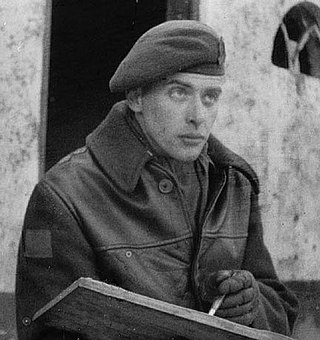
David Alexander Colville, LL. D. was a painter and printmaker.
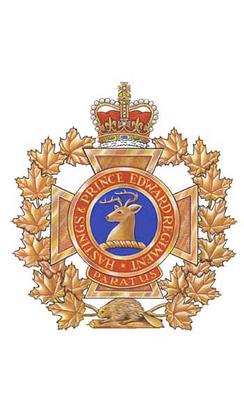
The Hastings and Prince Edward Regiment is a Primary Reserve infantry regiment of the Canadian Army. The regiment is part of 33 Canadian Brigade Group, one of four brigade groups of 4th Canadian Division. The regimental headquarters and one company are located at 187 Pinnacle Street in Belleville, with additional companies in Peterborough and Cobourg. The Peterborough Armoury houses what was traditionally B Company or Moro Company, and C Company or Cassino Company is housed in an industrial mall unit on Willmott Street in Cobourg. Normally, the regiment deploys as a composite, Ortona Company, while the headquarters and administration form Somme Company.
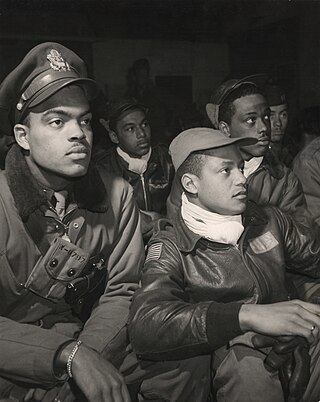
The military history of African Americans spans from the arrival of the first enslaved Africans during the colonial history of the United States to the present day. In every war fought by or within the United States, African Americans participated, including the Revolutionary War, the War of 1812, the Mexican–American War, the Civil War, the Spanish–American War, World War I, World War II, the Korean War, the Vietnam War, the Gulf War, the War in Afghanistan, and the Iraq War.
William Goodridge Roberts (1904–1974) was a Canadian painter known for his landscape paintings, still lifes, figure paintings and interiors. He was also a teacher.

Marc-Aurèle Fortin was a Québécois painter.

Alex Simeon Janvier, LL.D is a First Nation artist in Canada. As a member of the commonly referred to "Indian Group of Seven", Janvier is a pioneer of contemporary Canadian Aboriginal art in Canada.
Maurice Cullen is considered to be one of the first Impressionist artists in Canada. He is best known for his paintings of snow and for his ice harvest scenes where horse-drawn sleighs travel across the frozen waters of Quebec in the winter.
British official war artists were a select group of artists who were employed on contract, or commissioned to produce specific works during the First World War, the Second World War and select military actions in the post-war period. Official war artists have been appointed by governments for information or propaganda purposes and to record events on the battlefield; but there are many other types of war artist.

George Campbell (Cam) Tinning, known as Campbell Tinning, was a Canadian painter, graphic designer, muralist, and illustrator. He was an Official Canadian War Artist in World War II; the only one born in Saskatchewan. After the war, he resided in Montreal but travelled extensively and painted in every Canadian province, the United States, Jamaica, Italy, France, England and Scotland. In 1970, he was elected a full member of the Royal Canadian Academy of Arts.
Jewish Painters of Montreal refers to a group of artists who depicted the social realism of Montreal during the 1930s and 1940s. First used by the media to describe participants of the annual YMHA-YWHA art exhibition, the term was popularized in the 1980s as the artists were exhibited collectively in public galleries across Canada. In 2009 the Musée national des beaux-arts du Québec mounted a touring exhibition Jewish Painters of Montreal: A Witness to Their Time, 1930–1948, which renewed interest in the group in Montreal, Toronto, and Vancouver.
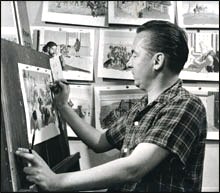
Jean-Philippe Dallaire was one of the leading artists working figuratively in the 1960s in Canada. He is known for his festive scenes peopled by macabre characters.

Robert Wakeham Pilot was a Canadian artist, who worked mainly in oil on canvas or on panel, and as an etcher and muralist. He is considered to be the last artist in Canada to paint Impressionistically with any authority or significance.

Ghitta Caiserman-Roth was a Canadian painter and printmaker. She was a founder of the Montreal Artist School and her work is in the National Gallery of Canada. Caiserman-Roth was also an associate member of the Royal Canadian Academy and the first painter to receive the Governor General's Award for Visual Media and Art.
Harold Beament was an official Canadian war artist with the Royal Canadian Navy and held the highest service rank of any Canadian artist in the Second World War – of Commander. He was noted for the treatment of his depictions in his paintings of landscape and figures in landscape and graphic work, described as "descriptive realism" by some authors.
References
- Bjarnason, Dan and Lani Selick. "North Korea: The Forgotten War," CBC News (Canadian Broadcasting Company). July 18, 2003.